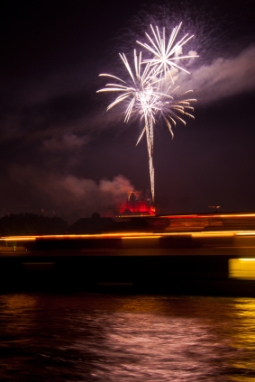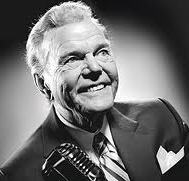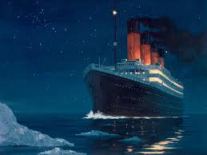Archive
Make readers devour your content with these curiosity hooks
On the night of April 14, the ocean liner Californian has progressed to within fifteen hundred miles of her destination, Boston Harbor.
Midnight.
Second Officer Herbert Stone is due for watch on the bridge.
Reporting for duty, Stone finds his apprentice seaman glued to a pair of binoculars, staring toward the black horizon.
He, the apprentice, has sighted a steamer in the distance.
He can make out the ship’s masthead light, her red light, and a glare of white lights on her afterdeck.
Stone asks the apprentice to try for communication by means of the Californian’s Morse lamp.
A bright beacon signal is flashed.
No answer from the steamer.
“Will that be all, sir?”
Stone nods; the apprentice leaves to make record in the patent log.
Now Second Officer Stone is alone on the bridge.
Glancing idly over the water, a white flash catches his eye—a white flash of light in the direction of the distant steamer.
Stone scratches his head, picks up the binoculars. Four more white flashes, like skyrockets burst in the heavens.
Stone notifies the ship’s captain.
Over the voice pipe, the captain asks if the flashes appeared to be company signals.
Stone cannot say for sure.
The captain then requests further communication attempt through the Morse lamp.
By now Stone’s apprentice has returned to the bridge. The beacon signal is employed once more.
Still no answer from the steamer.
Lifting the binoculars to his eyes once more, Stone observes three more flashes in the continuing light show, but now his attention is drawn to the steamer’s cabin lights.
They seem to be disappearing, as though the steamer were sailing away.
At 1:40 a.m., Stone sees the eighth and last white flash in the night sky.
In one hour, all the steamer’s lights have vanished into the blackness.
It is not until 4:00 a.m. that anyone on board the liner Californian learns the rest of the story.
The curiosity hook
So begins The Light Show, one of hundreds of stories told by radio personality Paul Harvey. One of the hallmarks of his storytelling was the ability to build curiosity that made you pay attention until the last word.
Listeners would eagerly sit through the commercial break just to hear the rest of the story. Isn’t that the desire of every blogger and content marketer, to hold readers’ attention through to the last word of your content?
It is one of the great challenges in content marketing today, and cause for concern. Here is why.
Recently Slate magazine did an online readership study that quantifies the problem:
- 10% of readers don’t scroll through an article at all
- Most read only 60% of the article
- Most of the most-tweeted articles are not read completely
The antidote is to build curiosity into your copy to keep readers reading. I learned a copywriting trick that works wonders for this. I call it the curiosity hook. Never heard of it?
Let me explain.
A curiosity hook is a short sentence that signals something important or surprising is ahead. It is a transitional phrase that links two paragraphs either at the end of one, the beginning of the next, or as its own one-line paragraph.
There is a simple reason it works.
It introduces a question in the mind of the reader that can only be answered by reading on. Let me give you some examples:
- And that’s not all.
- There’s one more thing.
- Then I made a discovery.
- Let me explain.
- You won’t believe what happened next.
- Here’s why.
- That’s when things got weird.
- So read on.
- But there’s another reason.
- Now here comes the good part.
- Then it got interesting.
- The story doesn’t end there.
- Here’s the twist.
- It gets better.
- But I didn’t stop there.
- Then she came to a decision.
- I couldn’t stand it any longer.
- And then inspiration struck.
Each of these hooks creates curiosity by teasing the promise of new information. It pulls the reader into the next paragraph. The curiosity hook puts a question into their mind that needs closure: What? Why? How? Closure comes when they read on.
Done well, your reader can’t escape without reading to the end.
And now, the rest of the story
If you have read this far, you’re probably curious how the story ends. Here is what happened.
Neither the Captain nor the Second Officer aboard the Californian had interpreted the white skyrocket flashes as cause for alarm.
It was a matter of coincidence that they had been seen in the first place. For earlier that night – the night of April 14 – the Californian had reversed engines and parked as a precautionary measure, halted in her course by an immense field of oceanic ice.
That unscheduled stop in the middle of the sea had provided the Californian a ringside seat to an unimaginable drama.
The distant steamer had intended those rocket flares as distress signals, and the Californian – only nine miles away – might have rushed to her aid.
Except for one thing. The steamer was sending other distress calls by radio. And the Californian was well within range of those messages.
But her radio operator was asleep.
The Californian’s fledgling radio operator – fresh from training school – was fast asleep in his cabin. And that night the ship’s Second Officer, from his vantage point on the bridge, unwittingly watched the sinking … of the Titanic.
As Paul Harvey famously said, now you know the rest of the story.
Now that your curiosity is satisfied, will you help satisfy mine? Let me know if you think curiosity hooks will help you engage your blog readers. Or, if you have others you’d add to the list. I’d love to hear from you in the comments below.
If you enjoyed this, you might also like:
Anatomy of the greatest brand story ever told
Why good blogging is like ‘follow the leader’
6 writer’s tricks for grabbing attention in the first paragraph
What every blogger can learn from Frank Sinatra
How to be a first-rank wordsmith in the next 10 minutes



